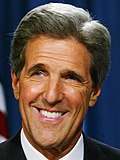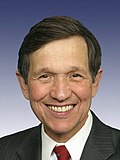| | |||||||||||||||||||||||||||||||||||||||||
284 Democratic National Convention delegates (236 pledged, 48 unpledged) The number of pledged delegates received is determined by the popular vote | |||||||||||||||||||||||||||||||||||||||||
|---|---|---|---|---|---|---|---|---|---|---|---|---|---|---|---|---|---|---|---|---|---|---|---|---|---|---|---|---|---|---|---|---|---|---|---|---|---|---|---|---|---|
| |||||||||||||||||||||||||||||||||||||||||
 County results Kerry: 35–40% 40–45% 45–50% 50–55% 55–60% 60–65% 65–70% | |||||||||||||||||||||||||||||||||||||||||
The 2004 New York Democratic presidential primary took place on March 2, 2004, also known as Super Tuesday. [1]




